Teeth Whitening: Perfection and Comfort
Machine translation
Original article is written in RU language (link to read it) .
The desire to have white teeth has been shaped over a long period of time. A light and bright tooth color was a very important aesthetic aspect, while the alignment of teeth and their symmetry were not of primary importance.
Learn more about teeth whitening in the online course Teeth Whitening: All Techniques.
A beautiful smile not only reflects neatness but also helps people feel more confident and plays an important role in socialization. The technical and technological development of dentistry has allowed us to change the color of natural teeth using non-invasive chemical methods. Whitening materials and methods have gone through several generations, and they are considered conservative and tolerant for creating a bright white smile. As a result of the aforementioned conditions, teeth whitening has become a mainstay in the treatment profile of dental offices. Earlier, the "Nightguard" system was used, later methods such as home teeth whitening systems utilized a gel of 10-20% carbamide peroxide with individual whitening trays. Then came materials with a lower concentration (6-8%) and absolutely universal trays.
Improving the quality of teeth whitening with home kits was about increasing convenience and reducing time. Based on the results achieved, they are currently considered the most conservative methods of whitening. However, the sensitivity that arises when using these systems could not be successfully eliminated. Regarding individual structural differences in tooth enamel, sensitivity was described by patients ranging from moderate to a clear sensation of pain.
Almost all patients complained of sensitivity and discomfort during the use of the home teeth whitening method and for several days after treatment. Previous teeth whitening products containing hydrogen peroxide were replaced with products containing carbamide peroxide, but this substitution did not solve the problem.
Unfortunately, the etiology of sensitivity after teeth whitening is neither well studied nor easily measurable; however, there is the hydrodynamic theory—a mechanism often cited to explain this type of sensitivity. According to this model, peroxide solutions introduced into the oral cavity bind to the existing dentin surfaces and cause the retraction of odontoblastic processes, leading to rapid movement of fluid within the dentinal tubules. This ultimately results in the stimulation of mechanoreceptors on the periphery of the pulp, leading to pain sensation when such teeth are exposed to cold or pressure or even when they are at rest.
As a result of the latest developments, a new whitening product has emerged. Its composition eliminates the problem of tooth sensitivity. This is WHITE DENTAL BEAUTY with an active ingredient called NOVON. This patented active ingredient has a new inherent feature, as it remains stable at a neutral pH in the syringe, and when diluted, there is a rapid increase in pH. This increase in pH, from neutral to alkaline, leads to enhanced release of perhydroxyl ions and a more effective whitening effect.
Testing
The testing procedure for this product was conducted among my patients under constant professional supervision. Patients were asked to provide detailed feedback typical for such a process. Ten patients participated in the testing process; primarily, they underwent teeth whitening. Their previous treatment was more than 5 years ago using a solution containing a sensitivity-effect component (35% H2O2). Half of the patients complained of acute tooth sensitivity, while the other half considered the emerging pain tolerable.
During the testing of the new material, a whitening material with 5% carbamide peroxide CP (White Dental Beauty WDB) and 6% HP hydrogen peroxide (WDB) was used. Patients with sensitivity received the 5% CP material, while the others received the 6% HP respectively.
The teeth whitening procedure was carried out using the StyleItaliano protocol.
The change in tooth color was checked every third day at the dental office. Patients were asked to record the activities in a diary; they documented the frequency of use (every day or a missed day), as well as their own experience related to the use of the system.
Before the whitening procedure, additional intraoral photographs were taken to document the baseline condition and the color of the teeth was recorded using cross-polarization technology (Smile Lite). These steps were repeated under the same conditions and adjustments after the completion of the teeth whitening.
In the case of the teeth whitening procedure in the test group, conducted based on the same protocol, the following results were obtained. Average usage time: 10 days; average daily usage time: 32 minutes; average change in tooth shade: 5 shades. The most outstanding result, along with the overall satisfaction of the subjects, was the disappearance of tooth sensitivity throughout the usage period, as well as in the following days after the end of the treatment.

Photo 1. Photography process, camera: Nikon D7000; flash: Nikon R1C1; studio light: Mikrosat Digital 5R (500Ws).
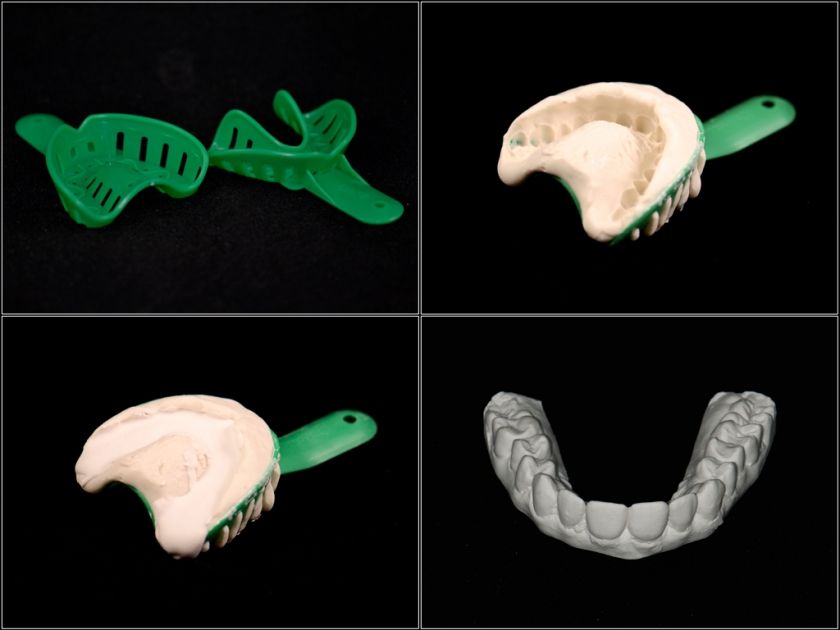
Photo 2. Taking an impression using a special impression compound. Making an impression from such a material allows obtaining it without a base layer. It enables the impression to be used for subsequent casting of a model in plaster (e.g., Kerr Snow White Plaster 1) without damage.

Photo 3. Preparing the model of the future cap using a vacuum forming machine. By skipping the dental technician's intervention, the period between manufacturing and the start of treatment is reduced. This is very beneficial for the patient.
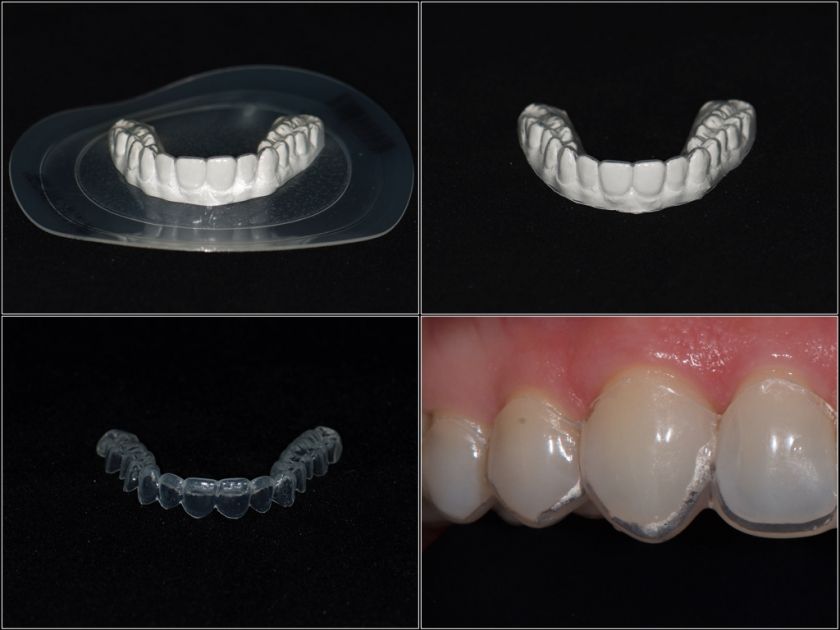
Photo 4. The model without a base allows for the manufacture of a more precise cap (for example, SCHEU® BIOPLAST bleach), using a vacuum machine (SCHEU TWINSTAR V). The gingival edge is positioned in such a way that it allows the edges of the cap to be placed on the surface of the teeth. This helps to reduce discomfort and irritation.

Photo 5. Treatment plan:
Product: White Dental Beauty 6% HP
Treatment days: 10
Initial color: C3 Vita Shade
Final color: B2 Vita Shade
Age: 28; gender: female
Sensitivity: 0 (scale: 0-10).
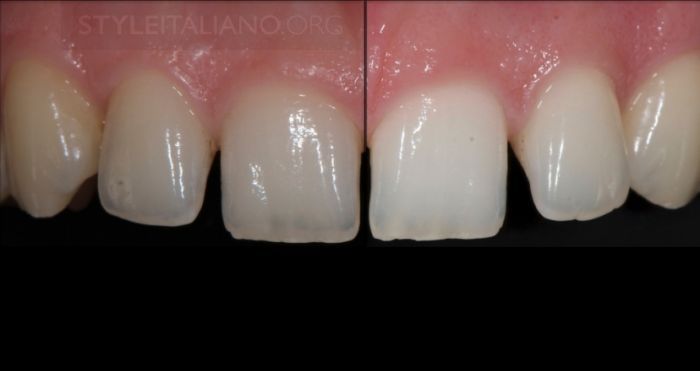
Photo 6.
Treatment plan:
Product: White Dental Beauty 5% CP
Treatment days: 10
Initial color: D2 Vita Shade
Final color: A1 Vita Shade
Age: 27; gender: female
Sensitivity: 0 (scale: 0-10).
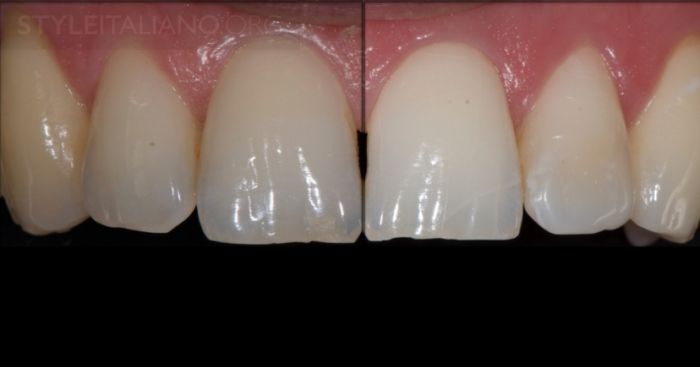
Photo 7.
Treatment plan:
Product: White Dental Beauty 6% HP
Treatment days: 12
Initial color: A3 Vita Shade
Final color: B1 Vita Shade
Age: 29; gender: male
Sensitivity: 0 (scale: 0-10).
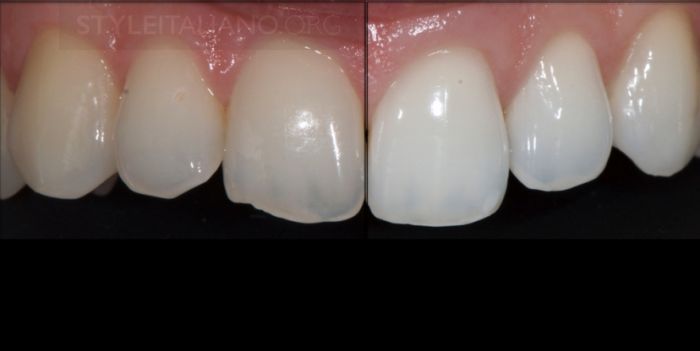
Photo 8
Treatment plan:
Product: White Dental Beauty 6% HP
Treatment days: 12
Initial color: A2 Vita Shade
Final color: 0M1 Vita Bleachingguide 3D Master
Age: 32; gender: female
Sensitivity: 0 (scale: 0-10)
Prevention and treatment tactics for tooth sensitivity after whitening in the webinar Whitening under dentist supervision: home whitening and products.
http://www.styleitaliano.org/
